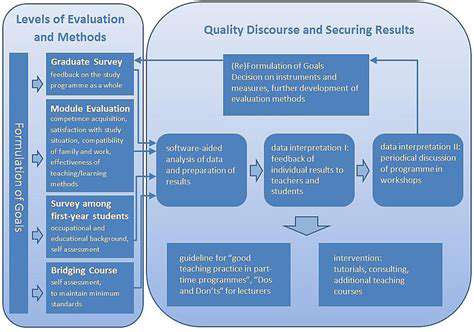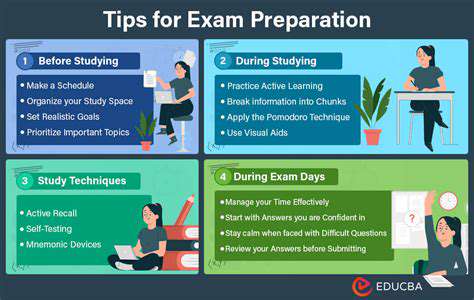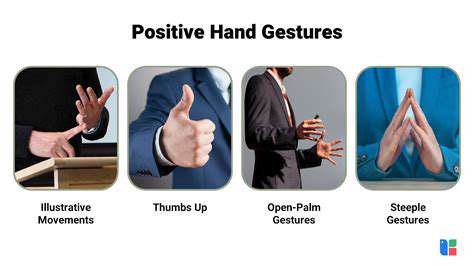Guide to Learning Critical Thinking

Understanding the Nature of Evidence
Evidence, at its core, is the foundation upon which sound reasoning is built. It encompasses various forms, from empirical data and expert testimony to historical documents and personal accounts. Critically evaluating the quality and relevance of evidence is paramount to forming a well-supported conclusion. Understanding the source, methodology, and potential biases inherent in the evidence is essential for a thorough assessment.
Different types of evidence carry varying degrees of weight. For instance, statistical data collected through rigorous scientific methods often holds greater weight than anecdotal accounts. However, even seemingly strong evidence can be flawed, and it's crucial to acknowledge the limitations and potential inconsistencies within the presented data.
Identifying Biases and Assumptions
Reasoning often relies on underlying assumptions, and recognizing these assumptions is vital for critical evaluation. These assumptions can be explicit or implicit, and they significantly influence the interpretation of evidence. Carefully scrutinizing these assumptions allows for a more nuanced understanding of the argument presented.
Furthermore, biases, whether conscious or unconscious, can skew the interpretation of evidence. Recognizing the potential for personal bias, cultural bias, or confirmation bias is crucial to developing objective and accurate conclusions.
Assessing the Reliability of Sources
The reliability of a source directly impacts the validity of the evidence it presents. Determining the trustworthiness of information sources requires careful consideration of factors like the author's expertise, the publication's reputation, and the potential for conflicts of interest. Evaluating the credibility of sources is an essential step in forming a comprehensive understanding.
Analyzing the Strength and Relevance of Evidence
The strength of evidence is not solely determined by its quantity but also by its quality and relevance. Evidence must directly support the claims being made. Irrelevant or weak evidence can weaken an argument, while strong, relevant evidence strengthens it. Evaluating the strength and relevance of evidence is key to determining the validity of a conclusion.
Understanding the context and methodology used to collect the evidence is also crucial. Was the methodology sound and free from significant flaws? This analysis directly impacts the reliability of the evidence itself.
Considering Alternative Explanations
A crucial aspect of evaluating evidence involves considering alternative explanations. Failing to acknowledge alternative perspectives can lead to incomplete or misleading conclusions. Exploring potential counterarguments and examining evidence from different viewpoints enhances the depth and objectivity of the evaluation process.
Recognizing Logical Fallacies
Logical fallacies are flawed patterns of reasoning that can undermine the strength of an argument. Recognizing these fallacies, such as ad hominem attacks, straw man arguments, or false dilemmas, is essential for evaluating the validity of reasoning. Identifying and avoiding these common errors in reasoning is vital for critical thinking.
Drawing Well-Supported Conclusions
Drawing conclusions based on evaluated evidence requires careful consideration of all available information. Drawing a well-supported conclusion involves synthesizing evidence, acknowledging limitations, and considering alternative viewpoints. This process necessitates a balanced and impartial approach, ensuring that the conclusion is justified by the presented evidence.
Social anxiety disorder, often abbreviated as SAD, is a debilitating condition characterized by a persistent and excessive fear of social situations. This fear stems from a concern about being judged, scrutinized, or embarrassed by others. Individuals with SAD experience significant distress and impairment in their daily lives due to their avoidance of social interactions. This avoidance can severely impact their ability to maintain relationships, pursue educational and career opportunities, and participate in social activities.
Practical Application: Applying Critical Thinking in Everyday Life
Identifying Assumptions
Critical thinking involves actively questioning the assumptions underlying statements and arguments. We often accept information at face value without considering the potential biases or motivations of the source. Developing the skill of identifying assumptions is crucial for evaluating the validity of information and forming well-reasoned judgments. This includes recognizing unspoken premises and considering alternative explanations for events or situations.
Evaluating Evidence
A key component of critical thinking is assessing the quality and relevance of the evidence presented. This involves considering the source of the evidence, its methodology, and the potential for bias. For example, is the information based on reliable data, or is it anecdotal or speculative? Learning to distinguish between strong and weak evidence is essential for making informed decisions.
Analyzing Arguments
Critical thinking requires analyzing arguments to identify their structure, identify premises and conclusions, and evaluate the logical connections between them. This includes looking for logical fallacies, such as straw man arguments or appeals to emotion, which can weaken the validity of an argument. By understanding the structure of arguments, we can better assess their strength and identify potential flaws.
Considering Different Perspectives
Critical thinking encourages the consideration of multiple viewpoints and perspectives. This involves actively seeking out information from diverse sources and acknowledging the potential for differing interpretations of events or situations. By considering different perspectives, we can gain a more comprehensive understanding of complex issues and avoid making overly simplistic judgments.
Problem-Solving Strategies
Critical thinking provides a framework for effective problem-solving. It encourages the identification of root causes, the generation of creative solutions, and the evaluation of potential outcomes. By systematically analyzing the problem, we can develop a more comprehensive understanding of the situation and identify solutions that address the underlying issues, rather than just surface-level symptoms.
Decision-Making Processes
Critical thinking plays a vital role in sound decision-making. It involves evaluating the potential consequences of different choices, weighing the benefits and drawbacks of each option, and considering the values and priorities involved. By using a critical thinking approach, we can make more informed decisions, taking into account a wider range of factors and potential outcomes, rather than relying on intuition or emotion alone.
Improving Communication
Critical thinking skills are essential for effective communication. When we think critically, we can articulate our thoughts and ideas more clearly and persuasively. It enables us to identify and address potential misunderstandings, and to present information in a logical and coherent manner. By engaging in critical thinking, we can become more effective communicators, ensuring our message is understood and appreciated.








![How to Write a Resume That Gets Noticed [2025]](/static/images/31/2025-07/BuildingaStrongOnlinePresence3AAComplementtoYourResume.jpg)


